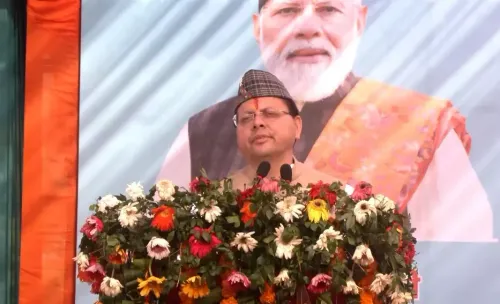How Did India’s Power Transmission Capacity Increase from 75,050 MW to 1,20,340 MW in Just 8 Years?

Synopsis
Key Takeaways
- Transmission Capacity Growth: Increased from 75,050 MW to 1,20,340 MW in eight years.
- Future Plans: Aiming for 1,43,000 MW by 2027 and 1,68,000 MW by 2032.
- National Grid Efficiency: Facilitates power transfer from surplus to deficit areas.
- Installed Generation Capacity: Stands at 484.81 GW as of June 6.
- Addressing Regional Disparities: Continuous expansion of the National Grid to meet demand.
New Delhi, July 24 (NationPress) The national transmission framework of India has been significantly enhanced, ensuring reliable power distribution across various regions. The capacity has escalated from 75,050 MW in 2016-17 to 1,20,340 MW by June 2025, as revealed in Parliament on Thursday.
The government aims to boost this transmission capacity across the National Grid to 1,43,000 MW by 2027 and further to 1,68,000 MW by 2032, stated Minister of State for Power, Shripad Naik, in a written reply to the Lok Sabha.
“A solid National Grid is in place to enable the transfer of power from regions with a surplus to those with a deficit, effectively addressing regional disparities in overall power availability,” he articulated.
According to the minister, the installed generation capacity of the nation stands at 484.81 GW as of June 6.
The expansion of the National Grid's capacity is ongoing, keeping pace with the growing demand for electricity and generation.
This proactive approach ensures that imbalances in supply and demand due to location-specific constraints are managed without significant transmission delays.
The minister added that the evolution of generation capacity is influenced by multiple factors including fuel source availability, logistics, resource potential, demand growth, and the readiness of supporting infrastructure.
This information was shared in response to a query from Congress member Shashi Tharoor regarding the impact of regional disparities in power generation on the overall surplus and the efficacy of the current transmission infrastructure.
Additionally, the Kerala MP inquired about any planned short-term and long-term strategies to bolster transmission networks in states prone to deficits.
The minister provided a comprehensive breakdown of power generation capacity across states, detailing the fuel sources utilized, such as coal, hydro, natural gas, and nuclear, along with power supply figures for various states.









